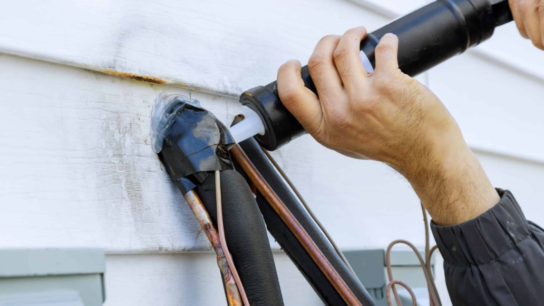Over the years, climate change has affected different facets of the environment, one of which is pest behaviour. These are some of the ways through which pests are changing their ways to suit the effects of rising temperatures and changes in weather patterns that may be of concern to homeowners.
Awareness of these changes can assist you in preventing/anticipating certain problems occurring in your territory. This is how climate change is gradually changing pest behaviour and what this means to your home and requires you to protect your property.
In what ways are fluctuations in temperature affecting the pest population?
Temperature is one of the most prevalent consequences of climate change, and it influences pests in a very extraordinary way. Longer growing seasons and frequent activities of pests during warmer seasons are experienced as a result of warmer temperatures.
It is natural that insects and rodents, for example, become more active and reproduce more often in many regions because warm periods are longer. This leads to more activity and, therefore, increases the rate of pest infestations within homes since the pests are likely to take advantage of these conditions.
What Changes Can Be Observed In Pests When Humidity Increases?
The effects of climate change, as touched on before, are the gradual increase in temperature and the rise in humidity levels. In certain circumstances, such as those that lead to high humidity, the conditions created are ideal for several pest species, particularly those that thrive well in humidity.
For example, there is a high possibility for the formation of molds and dies inside houses, and when this happens, cockroaches and ants are quick to take advantage of the situation. Other pests, such as mosquitoes, will also benefit from increased humidity because it leads to more breeding places in water that is stagnant. Residents may then be forced to combat these problems of humidity in order to avoid pest control issues.
In what ways do extreme weather events influence pest behaviour?
The effects of climate change are, however, vivid and increasingly evident, especially in extreme weather conditions like heavy rainfall and severe storms. Such conditions are capable of triggering pests to move to other areas, which are mainly populated by human beings and their dwellings.
For instance, floods cause rats and flies to invade homes in the process of looking for safer places to live in. Moreover, storms can destroy houses and create cracks through which various forms of insects infiltrate the homes’ interior.
What Steps Can Be Taken By Homeowners to Minimize Pest Problems?
Due to the various risks that come along with the alteration of pest behaviours, the homeowner has to be cautious and weary of these risks. Preventive measures such as maintenance and inspection are crucial since they enable a firm to handle any problem that may occur before it gets out of hand.
It helps to make sure that the homes are well closed and that any cracks that seem to have developed are repaired without delay to keep pests out. Also, it is recommended that people dry their homes to prevent humidity, use mechanisms such as dehumidifiers, and make sure that there are no water leaks.
Conclusion
Climate change is also affecting the pest in a way that can pose some inconvenience to homeowners in their everyday lives. Therefore, if one is to prevent pest problems in his or her home, then he or she should be willing to follow these changes as a way of preventing such problems.
Monitoring temperature and humidity, normal home maintenance, and fixing damages as soon as possible are other effective ways of controlling the effects of the new climate conditions on pests. Not only will this article be helpful in the future, but being aware of and up-to-date on climate patterns will help protect your home from pest issues in the future.





